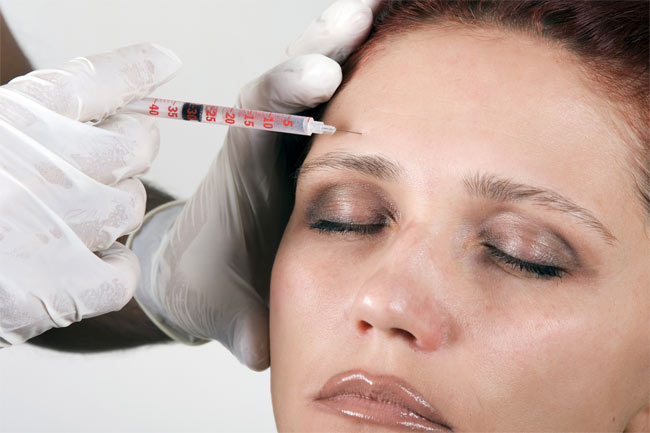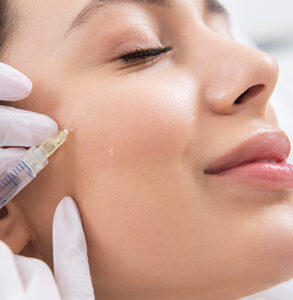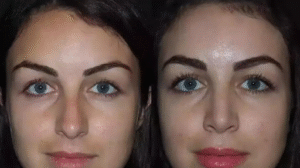
In recent years, regenerative medicine has begun to intersect with aesthetic medicine in compelling ways. One of the more advanced approaches that has gained attention is the Stem Cell Facelift in Abu Dhabi. For those in Abu Dhabi considering this procedure, it helps to understand how it functions, what the journey looks like, and what realistic outcomes one might anticipate. Below is a detailed look into the process, expectations, and common questions—presented in a clear, balanced, and patient-friendly manner.
What Is a Stem Cell Facelift?
A stem cell facelift is a modern procedure that aims to rejuvenate facial skin using the patient’s own cellular material. Unlike traditional facelifts, which rely mainly on surgical lifting and trimming of excess skin, this approach works from the inside outward: it harnesses the regenerative potential of stem cells to improve volume, texture, and tissue quality over time.
In practice, this often involves harvesting a small amount of adipose (fat) tissue from a donor site on the body—such as the abdomen or thighs—and processing that tissue to concentrate stem cells or regenerative cells. This processed material is then reintroduced into the face in selected zones that require volume restoration, contouring, or revitalization.
The goal is not merely to “pull up skin,” but to stimulate tissue regeneration, improve collagen architecture, and restore youthful contours naturally.
The Science Behind It
The underlying idea rests on adipose‑derived stem cells (ADSCs). Fat tissue is known to harbor a relatively abundant source of multipotent stem cells, which are capable of differentiating, secreting growth factors, and supporting tissue repair.
When processed properly, these regenerative cells can act in a paracrine fashion: rather than transforming directly into all new tissues themselves, they help signal existing local cells to remodel, restore, and rejuvenate. This includes stimulating collagen production, improving microvascular circulation, and supporting healthier skin matrix organization.
Because the cells are autologous (i.e., coming from the patient’s own body), the risk of immune rejection or allergic reaction is significantly reduced compared to foreign implants or synthetic fillers. However, the success of the procedure depends heavily on the quality and handling of the harvested cells, the technique of reintroduction, and the biological response of the patient.
The Procedure: Step by Step
Pre‑Procedure Preparation
Before the procedure, the practitioner will assess the patient’s facial anatomy, skin condition, fat reserves, and overall health. A careful consultation helps to define target zones (such as cheeks, under‑eyes, nasolabial folds, jawline) and set realistic goals.
On the day of the procedure, local anesthesia—and sometimes mild sedation—can be used, depending on patient preference and practitioner protocol.
Harvesting
A small liposuction (or fat‑aspiration) step is performed at the designated donor site. This is done through minimally invasive cannulas, extracting a modest amount of fat tissue. It is chosen from locations where fat is plentiful, such as the lower abdomen, flanks, or inner thighs.
Processing & Isolation
The harvested fat undergoes a refinement process to isolate the regenerative components. This may include centrifugation, filtration, or enzymatic steps, depending on the clinic’s protocol. The aim is to concentrate viable stem cells, growth factors, and regenerative microstructures—sometimes called “stem cell enriched fat” or a “nano‑fat” formulation.
Injection / Reinfusion
Once processed, the regenerative material is injected into the predetermined facial areas using fine cannulas or micro‑needling techniques. The practitioner sculpts and distributes the material to restore volume, soften hollows, and integrate it with the existing tissues. The goal is a natural, smooth result rather than abrupt bulges or lumps.
Post‑Procedure Support
After the injections, mild compression or supportive dressings may be applied. Patients are monitored briefly before being discharged. Most of the recovery is handled at home, with follow-up visits scheduled over days and weeks to ensure good integration.
Recovery and Healing Timeline
Immediately after the procedure, one might expect some swelling, redness, and mild bruising in both the donor and recipient areas. These are part of the body’s natural healing response and tend to subside gradually over days to weeks.
Over the first few weeks, the new regenerative cells integrate, form microvascular connections, and begin their remodeling work. Some of the initial swelling masks the early facial changes. During this phase, the improvement in texture, firmness, and volume becomes gradually more noticeable.
By the third to fourth month, the regenerative effects tend to stabilize. Collagen remodeling, improved skin elasticity, and tissue maturation continue well into this period. Many patients observe that the results seem more “settled” and natural by this time.
Longer term (beyond six months), the effects of the procedure will be clearer: well‑integrated volume, smoother skin transitions, and a more youthful facial silhouette—though aging inevitably continues.
What Is Realistic to Expect?
Expectations should align with the regenerative nature of the treatment. The goal is enhancement—not transformation. Some improvements are seen early, but the full benefits typically unfold gradually over weeks to months.
Volume loss, hollowing, sagging of midface, and mild to moderate signs of aging are among the more responsive issues. The procedure is less suited to cases of severe laxity or heavy sagging, where surgical lifting or structural support may still be necessary.
The results tend to look more natural and subtle, avoiding the “overdone” appearance of more aggressive interventions. Because the body itself does much of the remodeling, the improvements tend to harmonize with one’s individual facial anatomy over time.
In many cases, the benefits may last for several years, though lifestyle, genetics, sun exposure, and ongoing aging will influence longevity.
Considerations and Suitability
Not everyone is equally suited for a stem cell facelift. Ideal candidates are individuals with adequate fat reserves, mild to moderate volume loss, and relatively good skin quality. Patients with minimal fat, extensive sagging, or certain systemic issues may not achieve optimal results.
Because technique plays a central role, the skill of the practitioner, the handling of cellular material, and the infrastructure of the facility are critical. The better the protocol for harvesting, processing, and reinfusion, the more likely one will see consistent regenerative benefit.
Additionally, realistic expectation management is essential: this is not a “miracle fix” that halts aging forever, but rather a sophisticated enhancement tool.
Aftercare and Recovery Tips (What to Keep in Mind)
Gentle care of both donor and facial areas is important. Avoid strenuous activity in the early days, stay well hydrated, eat a balanced diet, and follow practitioner guidance regarding cleansing, sleeping positions, and sun exposure.
Follow-up visits help monitor progress and address any unevenness or concerns early on. Some practitioners may recommend complementary supportive therapies (non‑invasive light or energy modalities) to assist integration, although practices vary.
Be patient with the healing timeline. The most compelling aspects of a stem cell facelift tend to become evident over weeks and months, not immediately.
Common FAQs About Stem Cell Facelift in Abu Dhabi
How long does the procedure typically last?
The entire process—including harvesting, processing, and injections—usually takes several hours, depending on the number of facial zones being treated.
Will there be visible scars?
Because the intervention uses minor punctures and injections rather than large incisions, any marks tend to be very small and fade quickly.
When can one resume normal routines?
Gentle daily activities may resume shortly after, but more vigorous exercise or heavy exertion is often postponed for a week or more, per practitioner guidance.
How soon will I see results?
Some early changes in volume or texture may be noticeable within days, but the full regenerative effect generally develops over weeks to months.
Will subsequent sessions be needed?
In some cases, a maintenance “touch‑up” session may be recommended after a year or more, depending on how aging evolves and how well the initial result holds up.
Is anesthesia used?
Yes, local anesthesia is commonly used at both donor and recipient sites, sometimes with mild sedation if needed.
Does the body reabsorb the grafted tissue?
Some degree of resorption is typical, which is why careful technique and optimal regeneration are critical to retain a stable outcome.
Final Thoughts
A stem cell facelift in Abu Dhabi represents an innovative fusion of regenerative medicine and aesthetic enhancement. When executed with care, precision, and realistic expectations, it offers a pathway toward natural, youthful rejuvenation—leveraging one’s own biology rather than relying solely on mechanical lifting or synthetic materials.
As with any advanced aesthetic procedure, success depends on appropriate candidacy, high protocol standards, and patient patience with the healing process. For those considering it, the key is to seek a qualified provider, understand both potentials and limitations, and view the journey as a gradual enhancement rather than an immediate transformation.


